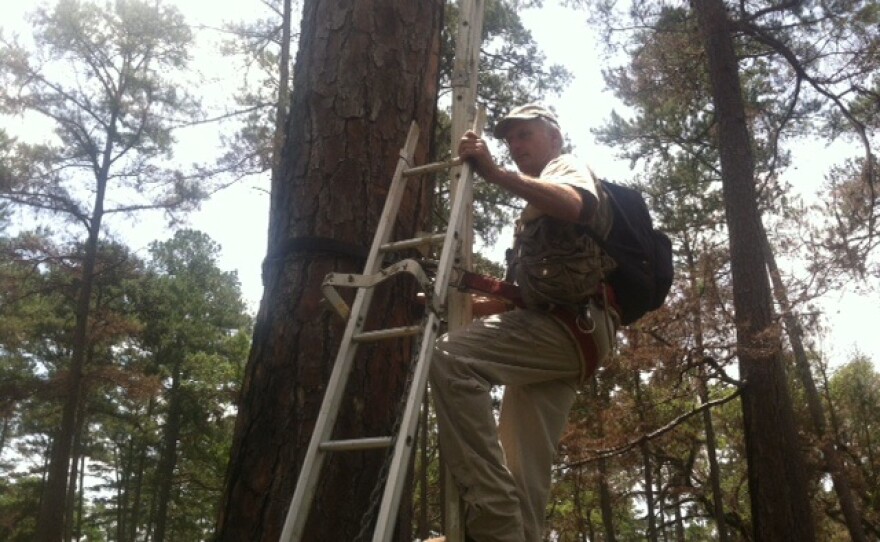They live in trees, hammer constantly, and are also represented by a wily, and beloved cartoon character. The woodpecker is a key feature of North Florida, and researchers are looking into how fire helps some woodpeckers continue to thrive.
Near the Florida-Georgia line, between the brush and tree-lined road that guides motorists from Tallahassee to Thomasville, is the Tall Timbers Research Station. There, environmentalists study the role of wildfires on an ecosystem. Tall Timbers biologist Jim Cox, spends a lot of time in the trees. just unloaded several ladders from his truck and sets off into the woods.
Cox has been tracking the region’s woodpeckers, which thrive on a regular burn. It’s one of dozens of Florida species which are fire-dependent. Today’s search involves the endangered, red cockaded woodpecker, which isn’t really red.
“Historically a lot of birds were given their names. The way was to shoot the bird, they had it in their hands and sometimes they’d zero in on these very minute features, rather than what they’d normally see in the wild. So, its red cockaded because they have these little features and they reminded them of hats they wore in the 1890’s," he explains.
Cox has just finished deploying an intricate ladder system he’s used to shimmy up—a nine-foot tall tree. He pulls out a white napkin from his pocket and as he unwraps it—a tiny baby woodpecker, emerges. It’s eyes just opened, and a soft gray dusting of what will soon be feathers are starting to appear on its tiny, winged-frame. Cox is putting miniature silver tags on the woodpeckers leg:
“We’re always careful to make sure the toes don’t get caught," he says, while holding the squirming woodpecker carefully. " It’s just like you wearing a wristwatch for the rest of your life."
Eric Staller is the land Manager at Tall Timbers. He studies the impact of prescribed burning on the eco- system, and says the entire Southeast is a fire-dependent system, acting as a filter.
“It helps replenish the grasses and forbes, the weeds growing in the understory of the ground cover. It helps the trees and those things, helps recharge water and give us freshwater—the Floridian Aquifer we sit on is a huge resource that’s being recharged by the use of prescribed fire and frequent fire.”
Staller says its easier for a forest to filter water when the ground is clean, than when it’s covered by overgrowth. And frequent, organized burning helps reduce the risk of wildfires, which have resulted in billions of dollars in damage in recent years. He says Tallahassee is lucky, given everything around it.
“They have the plantation belt, the Red Hills region—a great place to love with all these threatened and endangered species we have living here. To the South you’ve got Apalachicola," he says. " A lot of the frequent burns we do we very rarely have really have wildfires and when we do, they’re easy to maintain because we don’t have a high fuel build up, and people can put those fires out. They’re easy to manage.”
North Florida’s wildfire management has become a model for other states. But others, like California, continue to see damaging wildfires which cause billions of dollars in property damage.







